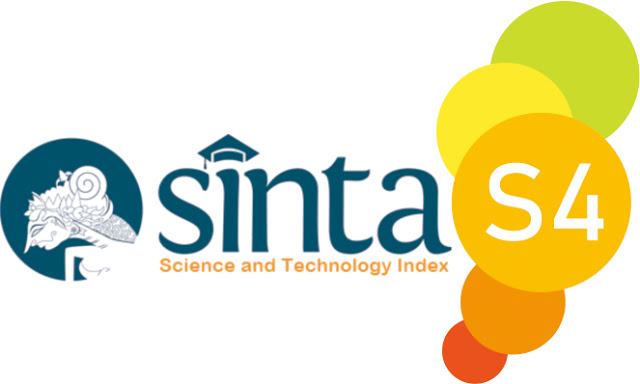Optimization of Random Forest Model with SMOTE for Fetal Health Classification Based on Cardiotocography
Abstract
Fetal health during pregnancy is a crucial aspect in ensuring the optimal growth and development of a child, particularly during the golden period of life from the womb to the age of two. In the medical field, monitoring fetal conditions is vital to detect potential risks as early as possible. One of the tools commonly used in this process is cardiotocography (CTG), which provides essential data on fetal heart activity and movement. With technological advancements, machine learning-based approaches are increasingly being utilized to process CTG data more effectively. However, a major challenge in classifying medical data such as CTG lies in class imbalance, where the distribution between majority and minority classes is uneven. This study evaluates the effectiveness of the Synthetic Minority Over-sampling Technique (SMOTE) in addressing this imbalance and assesses the performance of the Random Forest algorithm in classifying fetal health conditions. The results show that the combination of SMOTE and Random Forest achieves the best performance compared to other methods, with an accuracy of 94.40%, precision of 94.45%, recall of 94.40%, and an F1-score of 94.38%. These findings indicate that SMOTE is effective in improving the representation of minority classes, while Random Forest demonstrates superior and consistent classification performance on CTG data
Downloads
References
N. A. Tama and H. Handayani, “Determinan Status Perkembangan Bayi Usia 0 – 12 Bulan,” J. Mhs. BK An-Nur Berbeda, Bermakna, Mulia, vol. 7, no. 3, p. 73, 2021, doi: 10.31602/jmbkan.v7i3.5762.
U. Yeni Tri, W. Linda, and S. Santi, “Analisis Ketepatan Kode Diagnosis Dan Tindakan Kasus Obstetri Pasien Rawat Inap Di Rsud Waras Wiris Boyolali,” Infokes J. Ilm. Rekam Medis dan Inform. Kesehat., vol. 14, no. 1, pp. 14–21, 2024, doi: 10.47701/infokes.v14i1.3773.
M. Ramla, S. Sangeetha, and S. Nickolas, “Fetal Health State Monitoring Using Decision Tree Classifier from Cardiotocography Measurements,” Proc. 2nd Int. Conf. Intell. Comput. Control Syst. ICICCS 2018, no. June, pp. 1799–1803, 2018, doi: 10.1109/ICCONS.2018.8663047.
G. A. Pradipta and Putu Desiana Wulaning Ayu, “Klasifikasi Fetal Cardiotocography Menggunakan Pendekatan Boosting Classifier,” J. Sist. dan Inform., vol. 18, no. 1, pp. 103–110, 2023, doi: 10.30864/jsi.v18i1.594.
J. Li and X. Liu, “Fetal Health Classification Based on Machine Learning,” 2021 IEEE 2nd Int. Conf. Big Data, Artif. Intell. Internet Things Eng. ICBAIE 2021, no. Icbaie, pp. 899–902, 2021, doi: 10.1109/ICBAIE52039.2021.9389902.
D. Mennickent et al., “Machine learning applied in maternal and fetal health: a narrative review focused on pregnancy diseases and complications,” Front. Endocrinol. (Lausanne)., vol. 14, no. May, pp. 1–22, 2023, doi: 10.3389/fendo.2023.1130139.
S. K. Wildah, S. Agustiani, M. R. R. S, W. Gata, and H. M. Nawawi, “Deteksi Penyakit Alzheimer Menggunakan Algoritma Naïve Bayes Dan Correlation Based Feature Selection,” J. Inform., vol. 7, no. 2, pp. 166–173, 2020, doi: 10.31294/ji.v7i2.8226.
M. R. Santoso and P. Musa, “Rekomendasi Kesehatan Janin Dengan Penerapan Algoritma C5.0 Menggunakan Classifying Cardiotocography Dataset,” J. Simantec, vol. 9, no. 2, pp. 65–76, 2021, doi: 10.21107/simantec.v9i2.10730.
A. Mehbodniya et al., “Fetal health classification from cardiotocographic data using machine learning,” Expert Syst., vol. 39, no. 6, 2022, doi: 10.1111/exsy.12899.
M. I. Aziz, “Implementasi Machine Learning Untuk Deteksi Anomali Kesehatan Janin Menggunakan Metode Ensemble Berbasis Decision Tree masa kehamilan yang selanjutnya atau kedepannya ( Salwa Darin L , 2018 ). daripada bentuk dan suatu tren yang cenderung untuk menganalis,” 2025.
I. Sulihati, A. Syukur, and A. Marjuni, “Deteksi Kesehatan Janin Menggunakan Decision Tree dan Feature Forward Selection,” Build. Informatics, Technol. Sci., vol. 4, no. 3, pp. 1658–1664, 2022, doi: 10.47065/bits.v4i3.2672.
A. Latif et al., “Analisis Kinerja Algoritma Ensemble dalam Prediksi Perilaku Pembelian Pelanggan,” vol. 9, no. 1, pp. 557–563, 2025.
F. Dwi Astuti and F. Nova Lenti, “Implementasi SMOTE untuk mengatasi Imbalance Class pada Klasifikasi Car Evolution menggunakan K-NN,” J. JUPITER, vol. 13, no. 1, pp. 89–98, 2021.
H. Akbar and W. K. Sanjaya, “Kajian Performa Metode Class Weight Random Forest pada Klasifikasi Imbalance Data Kelas Curah Hujan,” J. Sains, Nalar, dan Apl. Teknol. Inf., vol. 3, no. 1, 2023, doi: 10.20885/snati.v3i1.30.
A. Nurhopipah, Y. Ceasar, and A. Priadana, “Improving Machine Leaming Accuracy using Data Augmentation in Recruitment Recommendation Process,” 3rd 2021 East Indones. Conf. Comput. Inf. Technol. EIConCIT 2021, pp. 203–208, 2021, doi: 10.1109/EIConCIT50028.2021.9431908.
M. Tiara et al., “Pemanfaatan Algoritma Adasyn dan Support Vector Machine dalam Meningkatkan Akurasi Prediksi Kanker Paru-Paru,” vol. 8, no. 5, pp. 8773–8778, 2024.
A. H. Nasrullah, “Implementasi Algoritma Decision Tree Untuk Klasifikasi Produk Laris,” J. Ilm. Ilmu Komput., vol. 7, no. 2, pp. 45–51, 2021, doi: 10.35329/jiik.v7i2.203.
W. Aprilita, Junadhi, Agustin, and H. Asnal, “Analisis Sentimen Layanan Hotel Menggunakan Algoritma Extra Trees: Studi Kasus pada Ulasan Pelanggan,” Indones. J. Comput. Sci., vol. 12, no. 2, pp. 284–301, 2023, [Online]. Available: http://ijcs.stmikindonesia.ac.id/ijcs/index.php/ijcs/article/view/3135
D. Ayres-de-Campos, J. Bernardes, A. Garrido, Joaquim Marques-de-Sa, and Luis Pereira-Leite, “SisPorto 2.0: A Program for Automated Analysis of Cardiotocograms,” vol. 318, no. November 1999, pp. 311–318, 2000.
E. S. Pribadi, P. Poningsih, and H. S. Tambunan, “Analisa Tingkat Kepuasan Masyarakat Terhadap Pelayanan Pengadilan Agama Pematangsiantar Menggunakan Algoritma C4.5,” Brahmana J. Penerapan Kecerdasan Buatan, vol. 2, no. 1, pp. 33–40, 2020, doi: 10.30645/brahmana.v2i1.46.
J. Schlenger, “Random Forest,” Comput. Sci. Sport, pp. 201–207, 2024, doi: 10.1007/978-3-662-68313-2_24.
Y. Li, W. Xu, W. Li, A. Li, and Z. Liu, “Research on hybrid intrusion detection method based on the ADASYN and ID3 algorithms,” Math. Biosci. Eng., vol. 19, no. 2, pp. 2030–2042, 2021, doi: 10.3934/MBE.2022095.
A. Karimah, G. Dwilestari, and M. Mulyawan, “Analisis Sentimen Komentar Video Mobil Listrik Di Platform Youtube Dengan Metode Naive Bayes,” JATI (Jurnal Mhs. Tek. Inform., vol. 8, no. 1, pp. 767–737, 2024, doi: 10.36040/jati.v8i1.8373.
W. Priatna, “Dampak Pengambilan Sampel Data untuk Optimalisasi Data tidak seimbang pada Klasifikasi Penipuan Transaksi E-Commerce,” Indones. J. Comput. Sci., vol. 13, no. 2, pp. 3070–3079, 2024, doi: 10.33022/ijcs.v13i2.3698.
F. Aziz, P. Ishak, and S. Abasa, “Klasifikasi Depresi Menggunakan Support Vector Machine: Pendekatan Berbasis Data Text Mining,” J. Pharm. Appl. Comput. Sci., vol. 2, no. 2, pp. 33–38, 2024, doi: 10.59823/jopacs.v2i2.53.
Copyright (c) 2025 Abdul Latif, Siti Khotimatul Wildah

This work is licensed under a Creative Commons Attribution-ShareAlike 4.0 International License.
This is an open-access article distributed under the terms of the Creative Commons Attribution-ShareAlike 4.0 International License which permits unrestricted use, distribution, and reproduction in any medium. Users are allowed to read, download, copy, distribute, search, or link to full-text articles in this journal without asking by giving appropriate credit, provide a link to the license, and indicate if changes were made. All of the remix, transform, or build upon the material must distribute the contributions under the same license as the original.















